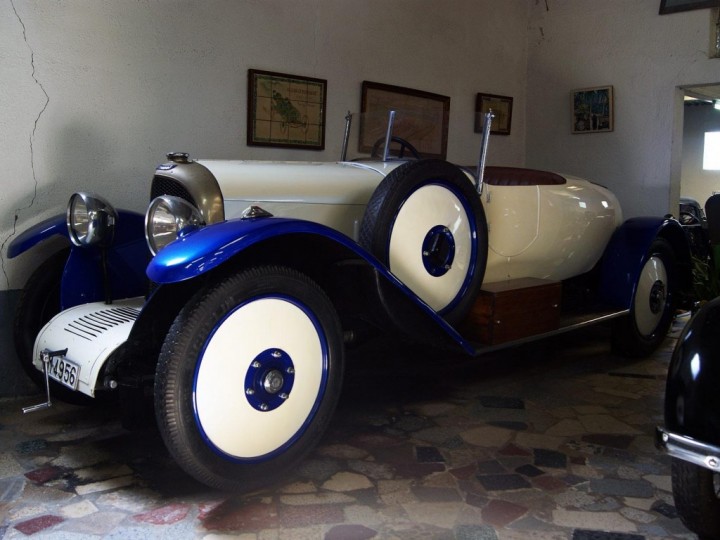1921 vions Voisin C3 M.O.M.
In the early 1930s, Gabriel Voisin could not pay all of his draftsmen any more and a young creative engineer called Andre Lefebvre quit, recommended by Gabriel to Louis Renault. Lefebvre finally entered Citroen where he led three particularly significant car projects: the Traction Avant, the 2CV and the DS, using a lot of Gabriel's lessons.
C3 model was presented in 1921 at the Paris Motor Show. It was sold as a chassis or as a finished car with a torpedo body. Under hood a 12-cylinder engine was located, while in 1922 the front brakes were optional! By 1923, the brakes on all four wheels became standard equipment, and then the cars sold only in the form of chassis. A total of 440 cars were made, until the model C5 was substituted for the model C3 in 1924.
The museum exhibits a car with the body of M.O.M. Company.




